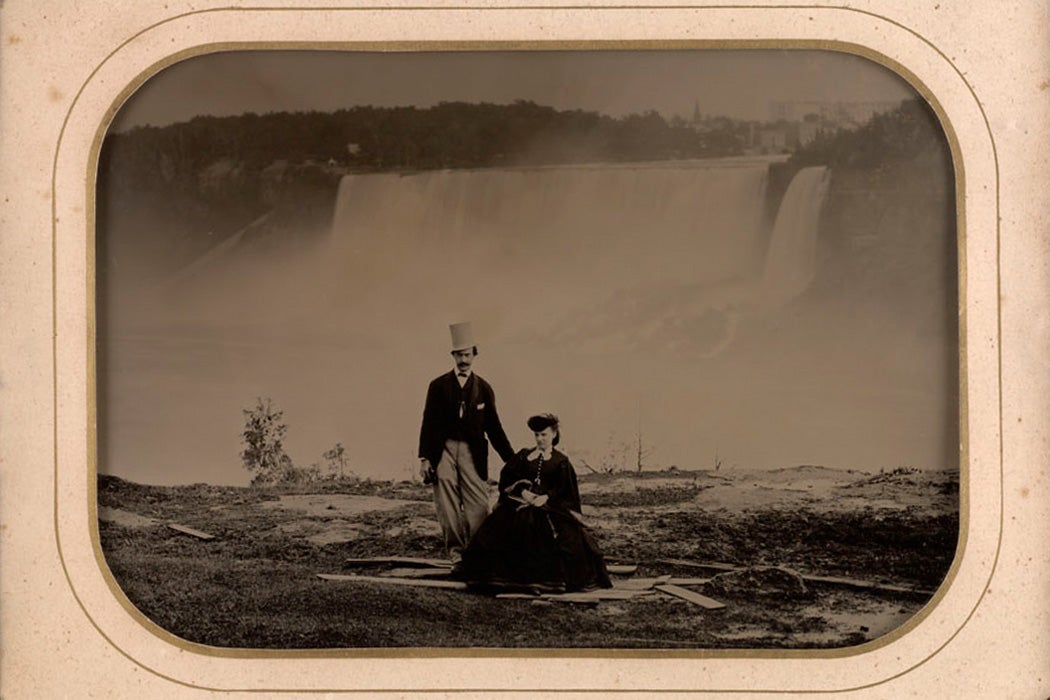How did Niagara Falls become the “Honeymoon Capital of the World?” On the border between the U.S. and Canada, the spectacular Falls are not as quite as storied a honeymoon destination as they once were, but thousands of newlywed couples still visit each year. If it hadn’t been for one of the first great conservation battles of the twentieth century, that definitely would not be the case.
The famous and the wealthy—in other words, those who could afford to go on honeymoons—first put Niagara on the map. This started as early as 1801, when Vice President Aaron Burr’s celebrated daughter Theodosia travelled there with her new husband Joseph Alston, a future governor of South Carolina. (A century later, another daring women, Annie Edson Taylor, became the first person to go over the Falls in a barrel.) Jerome Bonaparte, Napoleon’s brother, was another famed early Niagara honeymooner in 1806, traveling all the way up from New Orleans by coach.
The railroad and then, in the twentieth century, the car, helped to democratize the location’s appeal. Local boosters dubbed it the Honeymoon Capital and sold the location throughout the Northeast. Niagara-mania may have reached its apotheosis in the 1953 film Niagara, starring Marilyn Monroe: the poster depicted Monroe as the Falls.
But the great cataract was particularly vulnerable to being turned into a massive hydroelectric project. As N.F. Dreisziger tells it, the Niagara had been tapped to generate electricity as early as 1881. By 1894, there were seven companies generating electricity there. Plans for even more hydroelectric generators, and the diversion of water to them, came to a boil between 1906-1911, when conservationists and honeymooners squared off against developers and industrialists.
Theodore Roosevelt weighed in on the side of preservation of the Falls. (One wonders if his Attorney General, Charles Joseph Bonaparte, grandson of Jerome Bonaparte, had any influence in this.) But there was a problem. Relations between the U.S. and Canada “were not conducive to a quick settlement” of issues over the Falls. Indeed, relations were as chilly as the still unsettled Alaska/Canada boundary, which had riled the parties for years. The Canadian PM called Americans “horse-traders in the worst sense;” Americans, meanwhile, called Canadians, still a part of British North America, “unruly children.”
Weekly Newsletter
But the horse-traders and unruly children warmed to each other—this was the beginning of the end of the long enmity between the US and Britain. The resulting Boundary Waters Treaty of 1909 was a comprehensive plan for uses of Niagara’s water on both sides of the borders. Dreisziger credits the early environmentalists who campaigned to save the Falls with pushing the reluctant powers to the negotiation table. Thanks to them you can still honeymoon there and ride the barrel of marriage into the foaming mists.







